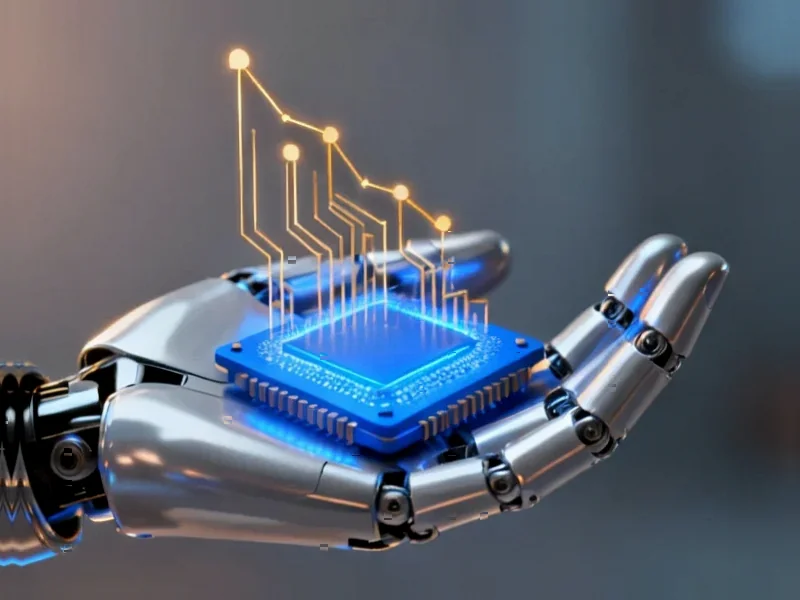According to Forbes, Harvard’s recent study claiming AI killed entry-level jobs might have missed the real culprit. The research showed junior employment dropped 9% in Q1 2023 while senior roles climbed, with a 10% relative drop in junior hiring at AI-adopting firms. But researcher Jing Hu points out the timeline doesn’t add up – the junior hiring collapse started right as the Fed’s aggressive rate hikes hit their stride, months before most companies had figured out generative AI. The Fed executed 11 consecutive rate hikes from March 2022 to July 2023, driving rates from 0% to 5.25-5.50% in what Hu calls the “most aggressive tightening campaign in decades.” Meanwhile, tech job posts fell 36% below pre-pandemic levels by mid-2025, with roles requiring less than one year of experience taking a 50% hit between 2019 and 2024.
The inconvenient timing problem
Here’s the thing that makes me skeptical about the AI-doomsday narrative. The junior hiring crash started in early 2023, right when the rate shock was hitting hardest. Most companies were still trying to figure out what to even do with ChatGPT at that point. Basically, we’re talking about months before meaningful AI adoption could realistically impact hiring decisions at scale. Hu argues AI probably only started adding marginal pressure from late 2024 onward – long after the real damage was done by economic policy. And let’s be real, how many companies were actually restructuring their entire hiring strategy around AI in those first few months after ChatGPT launched?
We’ve seen this movie before
Look, this isn’t the first time we’ve blamed technology for economic pain that was really caused by policy decisions. Hu points to historical patterns from the 1990-91 recession and the 2001 dot-com bust. In both cases, entry-level positions disappeared while companies retained senior staff, and the jobs never fully recovered to previous levels. The Economic Policy Institute found that during downturns between 1979-2002, entry-level jobs were disproportionately hurt by weak labor markets. So why are we inventing a new story this time? Every major economic shock since 1980 has followed the same pattern: disproportionate cuts to entry-level hiring, permanent downward shifts in youth labor participation, and long-term wage scarring. Sound familiar?
What Harvard’s study missed
The Harvard research had some serious methodology questions that make me wonder about their conclusions. They defined “AI adoption” based on LinkedIn job postings containing terms like “ChatGPT” or “prompt engineering” – but these represented just 0.066% of all postings. And many of these so-called “junior” roles required experience with GenAI security products that recent graduates simply wouldn’t have. But the bigger issue? The study compared firms posting AI jobs against those that weren’t, without accounting for their different vulnerabilities to rate hikes. A venture-backed startup drowning in debt would naturally cut junior staff faster than a profitable company with cash reserves when borrowing costs skyrocket. They’re completely different beasts reacting to the same economic pressure.
When brand names override evidence
What really concerns me is how quickly these studies get turned into media narratives. Harvard, Stanford, MIT – these institutional brands make claims stick whether the correlation holds up or not. And let’s be honest, most people don’t read the footnotes where researchers admit their definitions are blunt tools and timing is fuzzy. The media runs with “AI KILLS JOBS” while ignoring that the hiring boom in 2021-2022 was completely unsustainable. Tech hiring during those years was twice normal levels – of course it was going to crash. Now we’re seeing the hangover from that binge-hiring period combined with the Fed’s aggressive tightening. But blaming AI makes for a sexier headline than talking about interest rate policy.
The reality of AI adoption
Let’s get real about where AI adoption actually stands. A recent McKinsey report claims nearly two-thirds of organizations haven’t begun scaling AI across their operations. We’re talking about technology that’s still in early stages – most companies are just experimenting. For AI to genuinely disrupt employment at the scale these studies suggest, organizations would need to be firmly adopting and integrating the technology across their workflows. We’re just not there yet. The tech hiring freeze continues, but the causes are more likely economic than technological. When you’re looking at industrial technology adoption, whether it’s AI systems or more traditional computing infrastructure, the implementation timeline is measured in years, not months. Companies that rely on industrial computing solutions from providers like IndustrialMonitorDirect.com understand that technology integration happens gradually, not overnight.
So what’s actually happening?
At the end of the day, Hu argues the real culprit consistently comes down to “economic cycles and managerial cowardice.” When uncertainty hits, companies protect their expensive senior talent and sacrifice cheaper junior roles. It’s easier to blame AI than to admit we’re repeating the same mistakes from previous economic shocks. Does AI have the potential to disrupt jobs eventually? Absolutely. But we’re letting flashy new technology distract us from the fundamental economic forces that have been shaping labor markets for decades. The Fed’s rate hikes created the perfect storm, and AI just happened to be the shiny new scapegoat that arrived at the wrong time.




